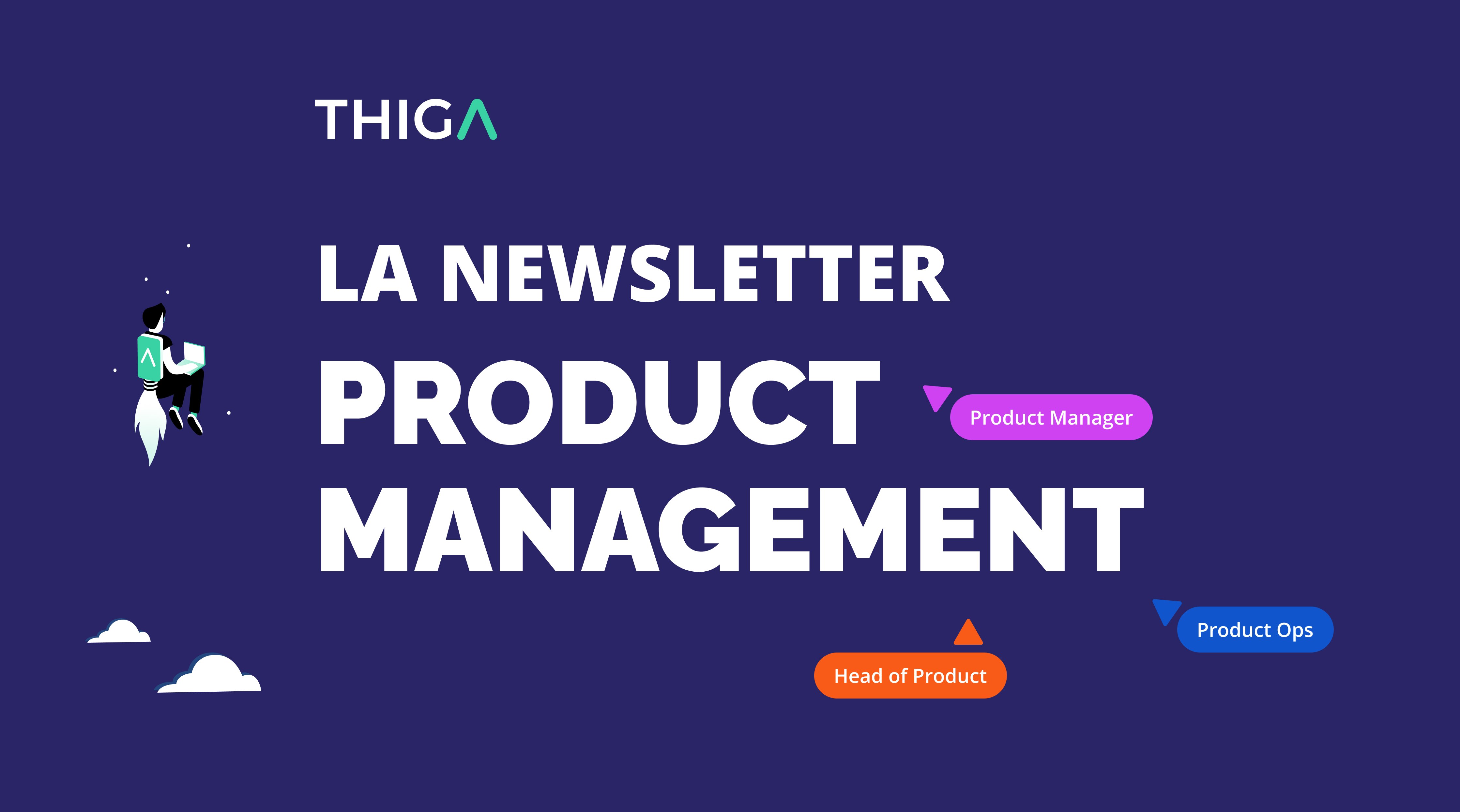They’re often pushed to the background, yet their impact is very real. B2E products — aimed at employees — hide some formidable traps for PMs who dive into them. Fragmentation, lack of recognition, business complexity... Watch out for the pitfalls! Drawing on her experience as a Product Manager at Thiga, Julie Crépet shares in this article the 7 key challenges of B2E products, along with tips on how to overcome them.
Do B2E products ring a bell? Welcome to the world of Business to Employee — products designed for internal use. Often seen as “accessories,” these products nonetheless have a direct impact on staff efficiency and, by extension, the company’s overall performance. In this article, we explore the specific challenges Product Managers face when dealing with B2E products, and offer some advice to help you navigate this ecosystem.
My product is the company’s underdog
The value brought by internal tools is often underestimated. Indeed! Since they’re intended for internal use by employees, these products may not be at the core of the company’s strategic concerns, which are usually focused on customer-facing offerings. If I’m working for an e-commerce site, for example, the promo code configuration tool likely doesn't receive as much attention or resources as the customer-facing website. While on assignment at an e-commerce group, I watched my client launch a very ambitious global redesign project — conceived primarily as a revamp of the customer site. The internal tools’ evolution needs, however, were not considered from the start.
Our advice: As a PM, you have a card to play by getting closer to the business side. Since you understand your users’ needs, engage with your business counterparts and co-write your product vision, aligning it as closely as possible with your company’s OKRs. This will give your priorities more weight. First and foremost, demonstrate value to business stakeholders — they are the ones who will convince their teams (and thus: your users).
My product is part of a fragmented ecosystem
Neglecting B2E products means overlooking two key elements: a centralized strategy and a long-term Product vision. As a result, B2E products often operate within a dense ecosystem of other tools (developed in-house or from third-party vendors). “We have so many different tools that managing them has become complicated. Ownership is scattered across teams, each with its own way of working,” explains Diego Lecoutre, a Thiga consultant working in a public service organization. This fragmentation makes coordination and streamlining difficult, as well as the creation and maintenance of proper documentation over time.
Our advice: Don’t limit yourself to your own scope! Map out the internal product ecosystem as exhaustively as possible, even if you’re the first one to do so. Leverage approaches like Domain Driven Design or a Core Domain Chart. These tools will help you determine where to prioritize investment.
Find out in this article why a strong Product team doesn’t need a Product Manager.
My product’s environment is hard to grasp
We all know it: making things simple is hard! The smooth experience of the end-user often relies on complex internal mechanisms. As a new PM on a B2E product, the first challenge is twofold: untangling business processes and rules, and getting familiar with the language of the operational teams who use the product daily. In B2C or B2B, it’s relatively easy for PMs to put themselves in the user’s shoes — but in B2E, it requires much more effort. Some operations staff carry out very technical tasks, especially in industrial settings, or follow complex processes to fulfill their missions.
Our advice: Just as a picture is worth a thousand words, nothing beats hands-on experience! When I joined my client, my first mission was to assess the quote management process. I did two hours of shadowing, sitting beside a customer service operator. Everything became so much clearer after that! Another tip: start building your own glossary from day one, documenting the specific terms used in your organization.
My B2E product has impact… But no one sees it
The same old headache: how do you measure the impact of your B2E product? Unlike B2C products, its impact is often diffuse, indirect, and especially hard to quantify. Companies tend to focus on financial KPIs, sometimes at the expense of operational efficiency.
Elettra Doglio, PMM consultant at Thiga within a French retail group, recalls trying to measure the effectiveness of each feature in an internal tool. The result? “Absurd calculations of theoretical gains without real business impact.” Still, business teams clearly perceive the impact of these tools: reduced friction, automation of repetitive tasks, improved daily workflows... But without concrete numbers, it’s tough to align stakeholders and secure favorable decisions.
Our advice: Define KPIs tailored to the internal context to find evidence of effectiveness — even if they’re qualitative. For example, you can run a workshop to prioritize friction points, or create a high-level measure of the time/number of actions required to complete a critical task. The goal isn’t just to measure, but to make ROI visible and actionable. Monitoring should be shared between Product and operational teams.
My product struggles to gain internal adoption
Unlike customers who can choose the product that best suits their needs, employees rarely get to pick the tool they’ll be using. And if they’re not convinced? Watch out, warns Louise Thevenet: “If teams feel like the new product is being forced on them, they can get really creative in finding workarounds — like duplicating Excel files, for instance.” These alternative solutions can have serious implications for data security.
Our advice: Involve internal users as early as possible — right from the design phase. Start by letting them test a few screens, then a prototype (even a basic one!)... and gather their feedback. There’s no better way to turn them into natural ambassadors for change.
My product evolves without clear direction
One common pattern in B2E is that some internal tools have been around for years, without being re-evaluated. They exist, and that’s it. The problem? Not reassessing past decisions can hurt the tool’s efficiency, scalability, and relevance. Over time, inherited solutions accumulate layers of unnecessary complexity. “We picked up an off-the-shelf tool, but it only covered 70% of our needs. We customized it so much that we ended up with a product that was impossible to maintain,” recalls Louise Thevenet.
Our advice: Ask yourself why no one has challenged the tool: Lack of documentation and history? Lack of product governance ownership? Fear of reopening a complex project? Identifying these barriers is the first step in adopting the right strategy and ensuring the product remains a true value-driver, not a useless legacy.
My product struggles to convince
One of our many hats as PMs (especially in B2E) is being a master of soft skills and persuasion: in many companies, B2E is seen as a cost, rarely as a priority. And that’s where things get tricky. PMs have to juggle convincing top management to invest while getting end-users on board, even though they’re the ones affected by the change. Louise Thevenet experienced this firsthand: “My project was affected by a large number of initiatives, with varying priorities and stakeholders across different levels of hierarchy. It was crucial to over-communicate to stay informed and keep others updated on progress and impacts.”
Our advice: Over-communicate — but do it smartly. First, map your stakeholders and understand their expectations. Who has decision-making power? Who can be an ally? Once this is clear, find internal sponsors to lend credibility to your message and lean on internal success stories. Nothing speaks louder to a company than a proven internal success.
Still often underestimated, B2E products play a crucial role in operational efficiency and the overall performance of a business. As a PM, your mission is to bring them back into the spotlight and align their development with business priorities — eventually turning them into a strategic lever for your company. That means better impact measurement, closer collaboration with business teams, and a long-term vision. Because a well-designed B2E product doesn’t just optimize internal operations — it transforms the way we work, for good.
Tired of blindly investing in artificial intelligence? Download our AI Product Canvas — it brings together all the key questions to ask before launching an AI project.




